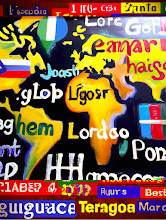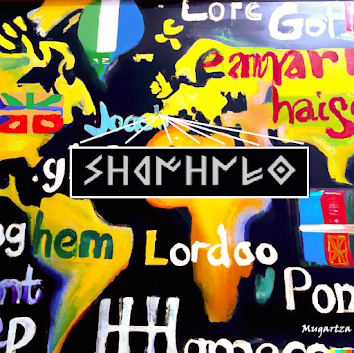La picota de Lakuntza y aquellas enormes cruces de piedra de detrás del Cristo de Alsasua (que en la época estival estaban medio cubiertas de hierba) siempre me han parecido llamativas. Aquellas grandes cruces de piedra que recuerdo de niño clavadas en el suelo entre las piezas de Otai y Pilotajauku, cuajadas de números romanos, me llevaban a un mundo mágico.
Con el paso del tiempo pude saber que algunas de las que antes habían sido picotas se habían convertido después en cruces, y que picotas y cruces estaban en parte unidas. No en concreto estas, pero sí muchas de los que se encuentran en las entradas de los pueblos. Cuántos habrían sido llevados a fusilar a la cruz, cuántos inocentes habrían perecido en la picota o en los pillekubek, como dicen en Lakuntza.
No sé si porque estamos en la época de los carnavales, pero al mirar la picota, frente a frente, colocada delante del escudo, imagino a los leones de las esquinas como dos brazos largos y me viene a la cabeza la figura de Miel Otxin con su tuturro. Ejecutaron al pobre y quemaron sus restos en la hoguera, como el Aittettarko de Hiriberri, y como muchos soñadores que morirían atados a la picota por una fuerte cadena de hierro.
En tiempos de carnaval vencen los vencidos, los que se han refugiado en las tinieblas salen a la luz, la noche se convierte en día con la luz del fuego y los momotxorros bailan con el ipuruko que les ponen a los bueyes en la cabeza y con el sarde en la mano y manchados con la sangre que han derramado por su delantal.
Y durante un tiempo, un tiempo limitado, las calles son de los que han sido injustamente acusados y se revuelven y liberan a los presos de la picota, colocando en el casco de la picota una ikurriña clandestina.
Y por la noche, son libres los Zamarroak, Maskaritak, Kixkimau Pintto, Mariarroka, Moxorroak, Ninia, Landarra, Hartza, Aitezarko, Zatamarroa, Aittun Aundiya, Amiñ Ttikia, Alikote, Mamuxarroak, Momoxarroak, Txatarrak, Txatarmorruek, Kitomoxorroak, Kamarroak, Mantaguna, Sorginak, Akerra y Juantranposoak.
Y dejando de tirar del carro los Zamar-Jantziak de rostro tiznado, les echan boñigas de vaca a todos los que quieren llevarlos a la picota, y son ellos los que los mandan a freir espárragos (pikutara).
====================================
MOMOTXORRO, USE THE PLOW AND AWAKEN THE EARTH!
The Lakuntza pillory and those huge stone crosses behind the place called The Christ of Alsasua (which in the summer were half covered with grass) have always seemed striking to me. Those large stone crosses that I remember as a child nailed to the ground between the pieces of Otai and Pilotajauku, marked with Roman numerals, took me to a magical world.
With the passage of time I was able to discover that some of those that had previously been pillories had later become crosses, and that pillories and crosses were somehow related. Not specifically these, but many of those found at the entrances of the towns. How many would have been taken to the cross to be shot, how many innocents would have perished in the pillory or in the pillekubek, as they say in Lakuntza.
I don't know if it's because we are in the carnival season, but looking at the pillory, face to face, placed in front of the shield, I imagine the lions in the corners as two long arms and the figure of Miel Otxin with his conical hat. They executed the poor man and burned his remains at the stake, like the Aittettarko of Hiriberri, and like many dreamers who would die tied to the pillory by a strong iron chain.
In carnival times the vanquished win, those who have taken refuge in darkness come to light, the night turns into day with the light of the fire and the momotxorros dance with the ipuruko (the frontal that is placed on the forehead of the oxen to pull the cart) and they dance with the sarde in their hands and stained with the blood that they have spilled on their apron.
And for a time, a limited time, the streets belong to those who have been unjustly accused and they revolt and free the prisoners from the pillory, placing a clandestine ikurriña (flag) on the top of the pillory.
And at night, the Zamarroak, Maskaritak, Kixkimau Pintto, Mariarroka, Moxorroak, Ninia, Landarra, Hartza, Aitezarko, Zatamarroa, Aittun Aundiya, Amiñ Ttikia, Alikote, Mamuxarroak, Momoxarroak, Txatarrak, Txatarmorruek, Kitomoxorroak, Kamarroak, Mantaguna, Sorginak, Akerra and Juantranposoaks are free.
And the sooty-faced Zamar-Jantziaks stop pulling the cart, they throw cow dung at all those who want to take them to the pillory, and they are the ones who send them to the pillory, to hell (pikutara).






